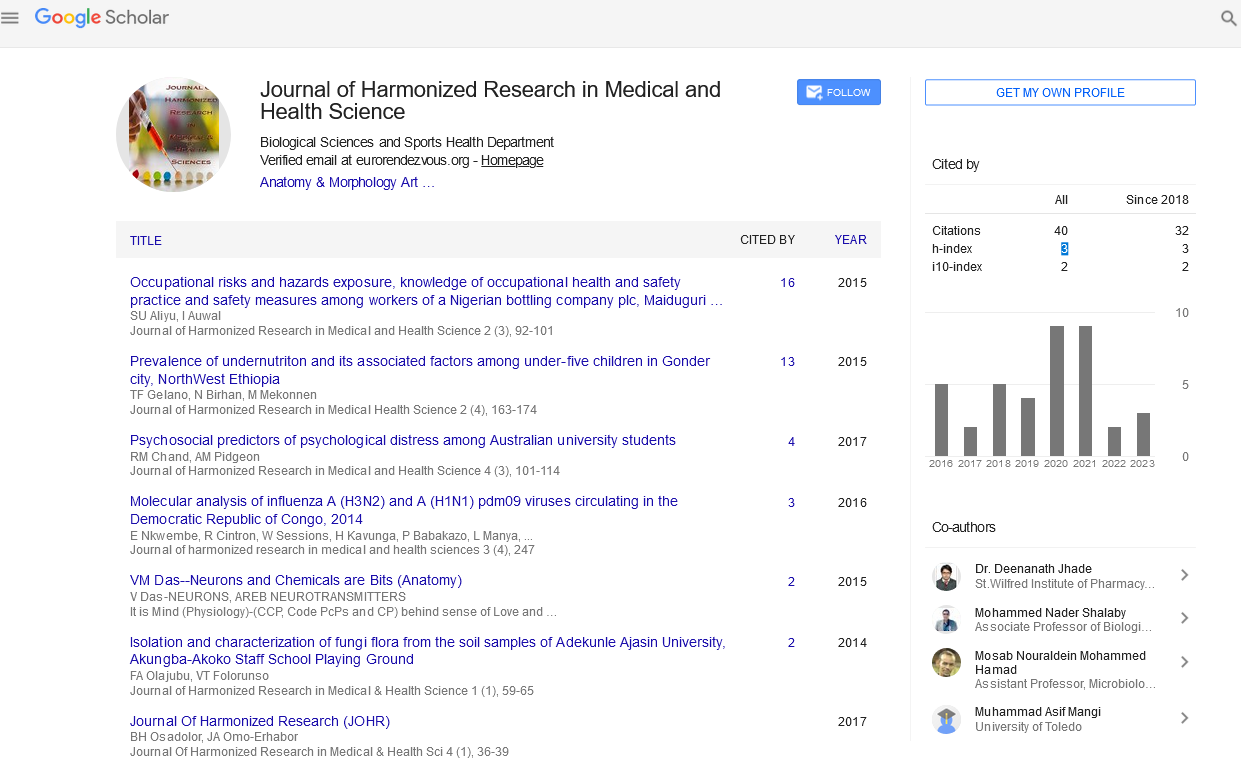Commentary - (2022) Volume 9, Issue 1
NEURO IMAGING AND ITS DEVELOPMENT
Xi Lao*Received: Feb 24, 2022, Manuscript No. JHRMHS-21-38498; Editor assigned: Feb 28, 2022, Pre QC No. JHRMHS-21-38498; Reviewed: Mar 17, 2022, QC No. JHRMHS-21-38498; Revised: Mar 21, 2022, Manuscript No. JHRMHS-21-38498; Published: Mar 28, 2022, DOI: 10.30876/2395-6046.22.9.125
Description
Neuroimaging is the use of quantitative (calculated) techniques to study the structure and function of the central nervous system, and is an objective way to scientifically study the healthy human brain in a non-invasive manner. Increasingly, it is also used in quantitative studies of brain and psychiatric disorders. Neuroimaging is a very interdisciplinary field of study, not a specialty. Neuroimaging is different from neuroradiology, a specialist who uses brain imaging in the clinical setting. Neuroradiology is practiced by practicing a radiologist.
Neuroradiology focuses primarily on the identification of brain lesions such as vascular disease, stroke, tumors and inflammatory diseases. Unlike imaging, neuroradiology is qualitative (based on subjective impressions and extensive clinical training), but it may also use basic quantitative methods. Functional brain images, such as functional magnetic resonance imaging (fMRI), are common in neuroimaging but are rarely used in neuroradiology.
The first neuroimaging technique to date, invented by Angelo Mosso in the 1880s, is known as the “human circulation balance”, which can non-invasively measure blood redistribution during emotional and intellectual activity. Then a technique called pneumoencephalography was introduced. This process drains the cerebrospinal fluid around the brain, replaces it with air, and changes the density of the brain and its surroundings to make it more visible on x-rays, considered very dangerous to the patient. The forms of magnetic resonance imaging (MRI) and computer tomography (CT) were developed.
With the advent of computerized axial tomography (CAT or CT scans), more and more detailed anatomical images of the brain have become available for diagnostic and research purposes. William H’s name. Olden Dorf (1961), Godfrey Newbold Hounsfield, and Allan McLeod Cormack (1973) are associated with this revolutionary innovation, much simpler, safer, non- invasive, painless, and (reasonable) Allowed for repeatable neurological examinations.
Early techniques such as xenon inhalation provided the first blood flow map of the brain which ic developed by Niels A Lassen and David H. Ingvar and Erik Skinhøj in southern Scandinavia used the isotope xenon-133. Later versions have 254 scintillators that can generate 2D images on a colour monitor. It allowed them to build images that reflect brain activation through speaking, reading, visual or auditory perception, and spontaneous movement. This technique investigates fictitious continuous motion, mental arithmetic, and mental space navigation.
Immediately after the initial development of CT, magnetic resonance imaging (MRI or MR scan) was developed. Instead of using ionization or x-rays, MRI uses changes in the signals produced by protons in the body when the head is placed in a strong magnetic field. Magnetoencephalography (MEG) signals were first measured by physicist David Cohen of the University of Illinois. Then he used one of his first SQUID detectors to again measure the MEG signal.
In addition to fMRI, another example of a technique that makes older brain imaging techniques even more useful is the ability to combine different techniques to obtain a brain map. This happens very often on MRI and EEG scans. EEG’s electrical schematics provide momentary timing, and MRI provides a high degree of spatial accuracy. The combination of MEG and functional magnetic resonance imaging was first reported. It combines the spatial resolution of fMRI with the temporal resolution of MEG. In many cases, the non-uniqueness of the MEG source estimation problem (inverse problem) can be mitigated by including information from other imaging modality as a pre-constraint.










